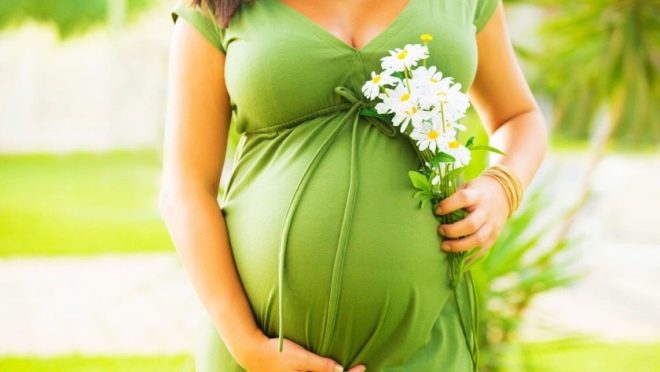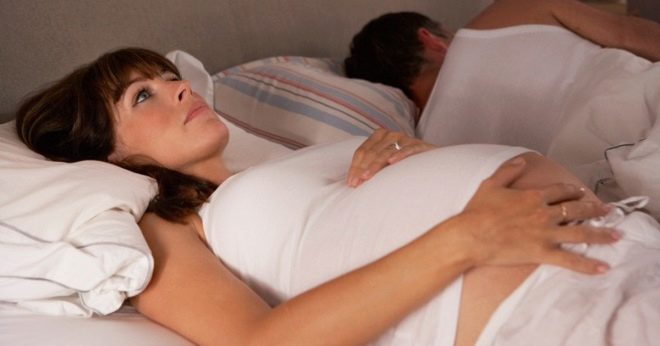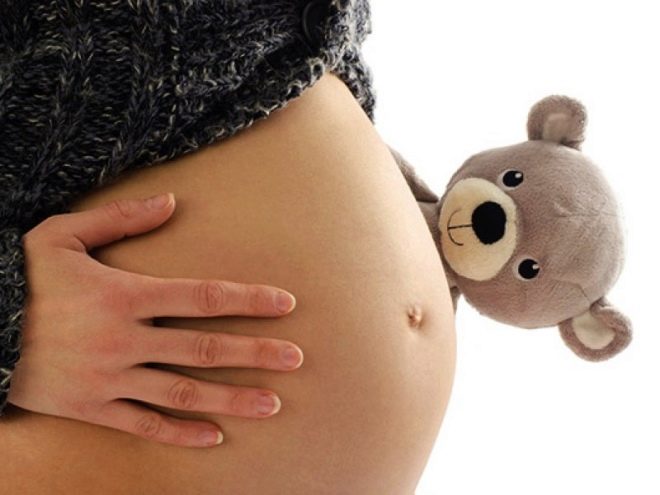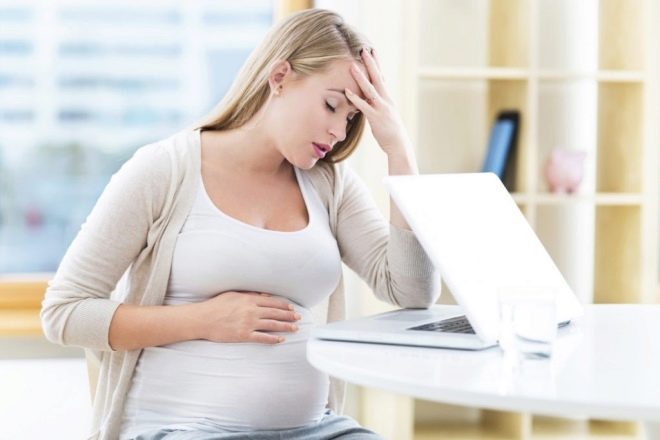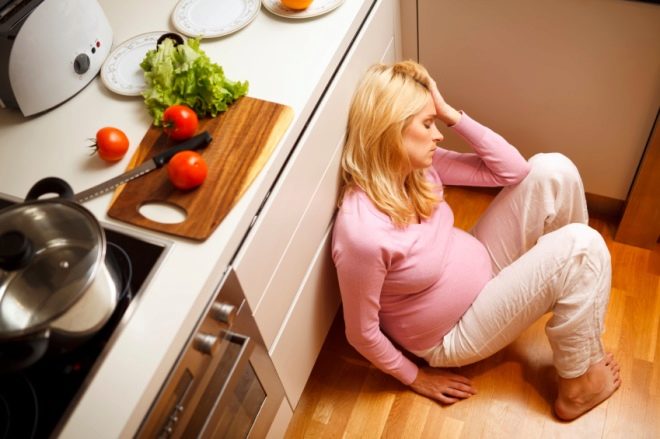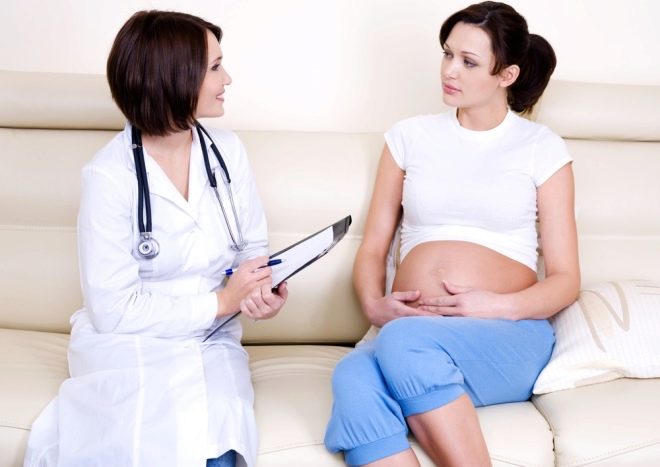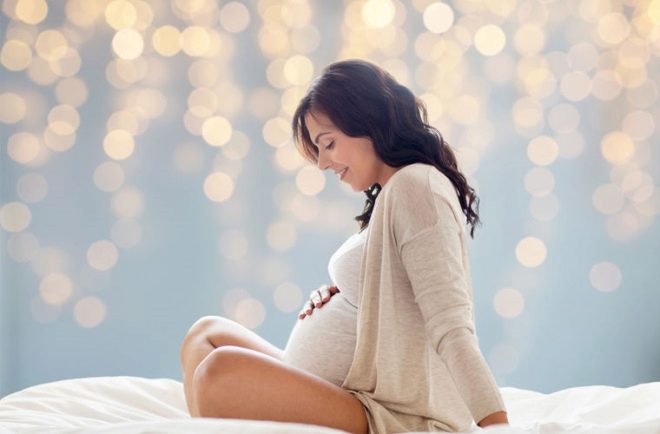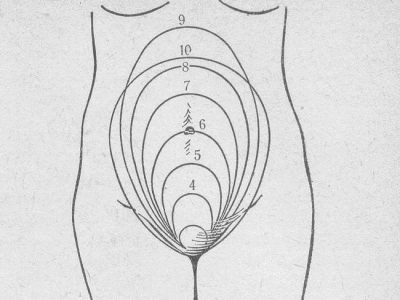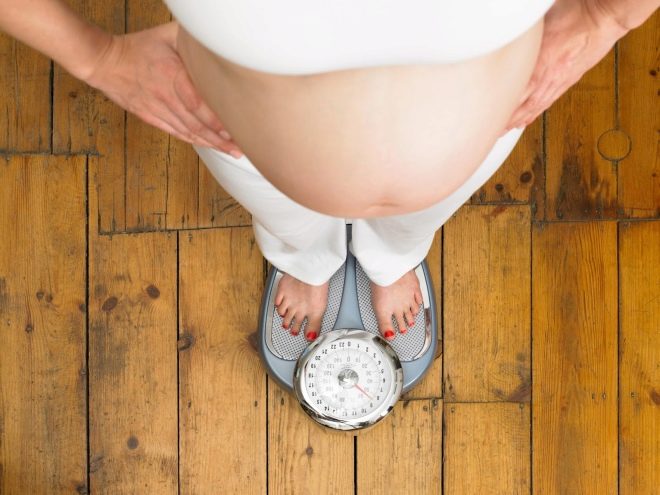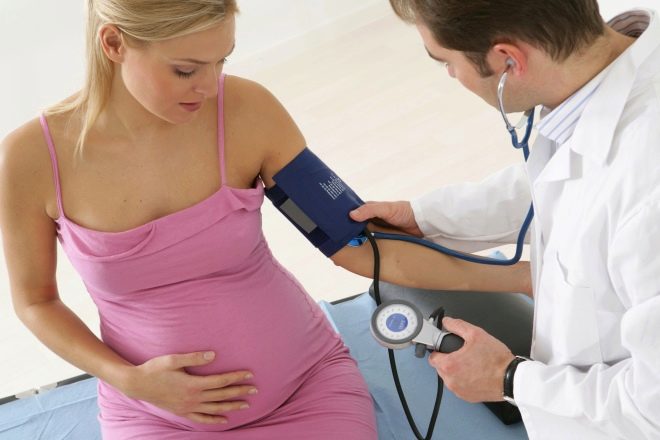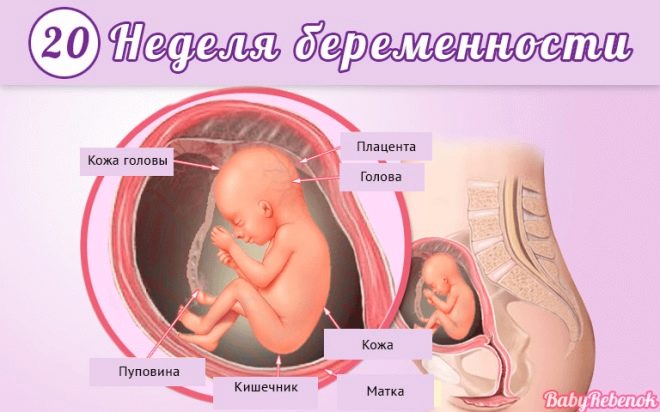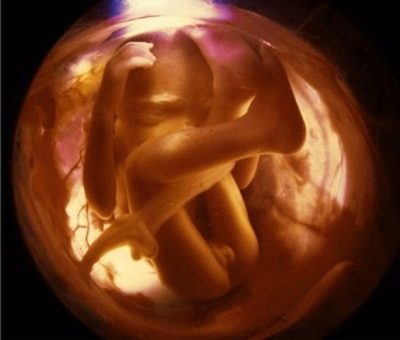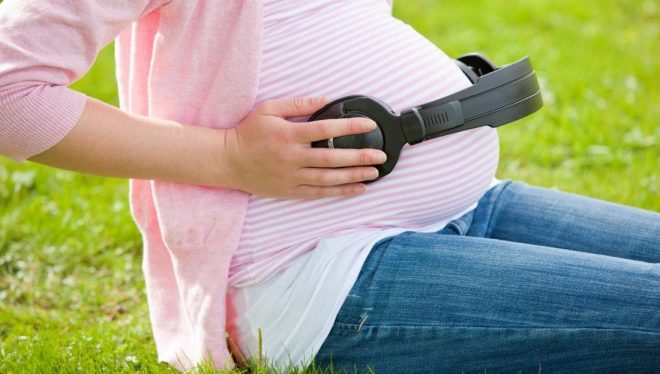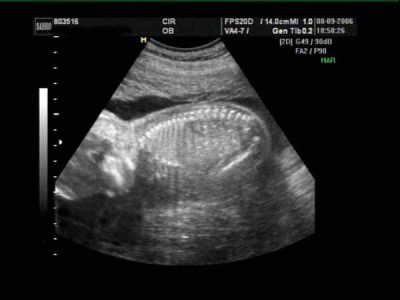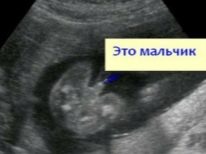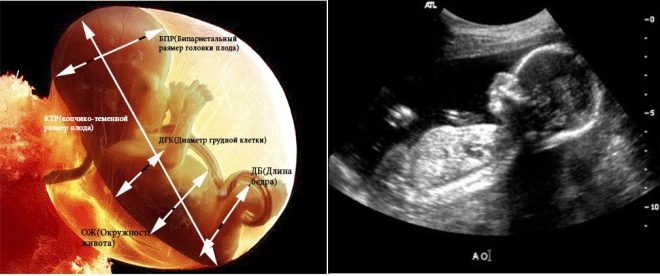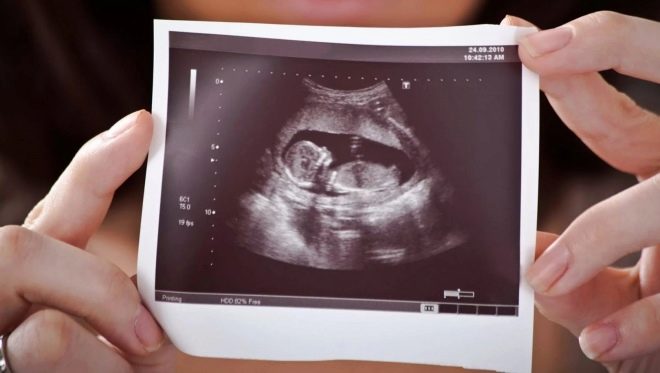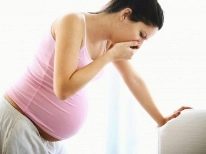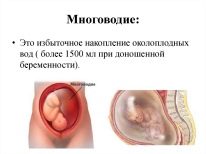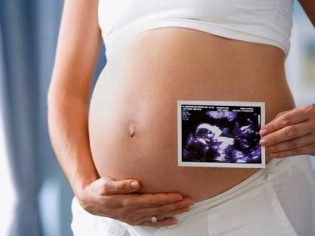20 week of pregnancy: what happens to the fetus and the expectant mother?
That was the middle of pregnancy. Week 20 completes the first half of an uneasy and interesting journey, at the end of which a long-awaited meeting with a baby will take place. The woman is now at the peak of well-being, she looks spectacular and full of enthusiasm.
A few days between the 19th and 20th week is the time of the tremendous experience of the first movements of the fetus, the first “contact” of mother and baby. Tell about it in more detail.
How many months is it
The beginning of the 20th week of pregnancy is 19 total obstetric weeks. They are called obstetric because the countdown is from the first day of the last menstrual period. In fact, the baby exists in the mother's womb about 2 weeks less - from the day of conception went 18 week. About 16 weeks ago, a woman found out about the delay and was probably the first to take a pregnancy test.
4.5 months have passed in the usual calendar calculation. By obstetric standards is completed fifth month of pregnancy. There is still the same amount before the birth, but now the woman will face a paradox - time will start to flow more slowly, since the future trimester is perceived and experienced by future mothers somewhat harder than the second.
In the meantime, the second trimester is the most favorable and peaceful period. Week 19-20 is an impressive period in which the fact of pregnancy is no longer hidden, and there is no need for that. The future mother has already managed to come to terms with the fact that big changes are waiting for her soon. In the meantime, life flows quite measuredly. A pregnant woman is registered in the antenatal clinic, she passes the necessary tests, and the period from 19 to 20 weeks is not an exception.
Feelings of the future mother
It may seem to others that at this time there is little change, because the woman continues to lead a normal life - work, study, engage in everyday business. However, only the pregnant woman herself knows now what deep and interesting processes occur in her body. A woman feels the rise of strength and vigor, she wants to be in time, to do everything, because very soon another family member will be born, who will definitely become the main one.
At week 20, sensations are constantly being updated; let's look at how they can be.
General well-being
In general, a woman who is in the 20th obstetric week of pregnancy feels good. Gravity, which will be accompanied by the last trimester, is not yet, and the painful toxicosis is no longer. The tummy, although it grows by leaps and bounds, does not cause great inconvenience.
However, this week a woman may notice something new in her condition: from time to time, especially at night, she throws it into heat, then into chills. These "tides" are due to hormonal changes that come from the first days of pregnancy.
Stirrings
The vast majority of pregnant women at this time clearly feel the movement of their baby. This is certainly one of the most exciting and touching moments during the entire pregnancy.If the woman has not yet felt the movements of the baby, now she is in suspense: she is looking for the answer to the question of why she still does not feel them.
The movements are very individual. Much depends on the woman’s pregnancy. If the second or third, then the walls of the uterus stretch faster, movements become apparent earlier. If the birth of the first child is expected, then the woman will feel the first light tremments much later. Pregnant twins or triplets begin to feel the activity of their children before anyone else.
If the placenta is located on the back wall of the uterus, the probability of fetal movement earlier is high. If the “baby seat” is located on the front wall, the sensitivity decreases.
Women who do not sit still, constantly move, work, lead an active lifestyle, later begin to feel their baby, because they simply do not have time to concentrate on themselves and their feelings.
At 19-20 weeks, almost 90% of pregnant women state that they already clearly feel how the baby moves in the tummy. But there are those who still live only in anticipation of this miracle. In primiparous women, the baby can manifest itself only next week or week 22. This is not considered something unusual or abnormal, you just need to be patient.
Those who already have a stir, note that the kids are more active in the evening and at night. This does not mean that the crumb is an avid night owl. Just in the evening and at night, the woman relaxes, rests, all the subtle touches of the crumbs from the inside in this state are perceived more clearly and distinctly.
Mood and emotional state
Week 20 “knocks out” a woman somewhat from the measured blissful state in which she had been in previous weeks. This is due to worries about the second prenatal screening.
But right now the image of the child is visualized. If before mom imagined him only in general terms, now she knows exactly what the puzozhitel looks like, what sex he is. If you hang an ultrasound scan in a prominent place, then it becomes even easier to communicate with the baby.
Some pregnant women have long noticed that they began to quickly forget everything, they are absent-minded and cannot concentrate at all. This is completely normal, because it is through the processes of inhibition, which cause forgetfulness and confusion, the body tries to protect the baby, to protect him from his mother's emotions, which are not always positive.
Often, at week 20, a woman has difficulty in communicating with the household, because not all family members are ready for the fact that the need for attention in a pregnant woman increases dramatically. Now the future mom needs not so much physical assistance (to lift, move, rearrange), but rather heartfelt talk, warm support and participation, a feeling of complete security.
If the spouse and the rest of the family cannot, for whatever reason, make such a stop, the woman becomes capricious, tearful, which is clearly not conducive to strong and friendly relations in the family.
Nature of discharge
Between the 19th and 20th week, a woman may notice that her vaginal discharge has become more abundant and lighter. With so-called leukorrhea (white hair), future mothers often face. Now the increase in the amount of discharge is due to the natural need of the female body in maintaining the normal microflora of the vagina. To maintain it in such a crucial period, the secretion increases, which may raise many questions for future moms.
Fear leukorrhea is not necessary. By themselves, whites, when they are light or yellowish, are not accompanied by itching and do not have a strong bad smell, do not bear the danger in themselves. Disadvantages associated with dischargeare purely hygienic in nature: a woman must constantly wear thin daily pads (tampons should not be used during the period of gestation of the baby!).
Alert pregnant should discomfort. If there was a painful burning sensation and itching in the perineum, and the discharge changed the consistency and began to resemble granular curd, then with high probability we can say that the thrush began.
Abundant leucorrhoea is an excellent environment for the development of a wide variety of pathogens. Therefore, the accession of infection is not excluded. If the discharge is greenish, it indicates bacterial purulent inflammation. Pink and brown discharge is an admixture of blood, and white plaque on the walls of the vagina and external genital organs is a sign of a fungal infection.
In all cases, if the normal discharge changed color, smell, texture, the woman should consult a doctor. The sooner the pathogen is detected, the faster the treatment and sanation of the genital tract will be carried out. The risks of fetal infection will also be reduced.
Pains
If earlier the absence of pain was considered a sign of a normal healthy pregnancy, then from the 20th week (from this conditional “equator”) some types of pain are considered quite acceptable and physiologically conditioned. These include, first of all, pain in the lower back and knees.
The load on the legs increases every day, because the weight of the woman is changing in a big way, and the center of gravity is shifting, which causes complaints that the lower back and back hurt.
Tangible enough and ligament apparatus, which keeps the uterus in a fixed position. This organ grows, ligaments have to “adjust”, they thicken and stretch, this can cause tingling in the lower abdomen, in the right and left sides, as well as sudden occasional “lumbago”, which resemble electric shocks.
If the lower back is not constantly, and the pains themselves do not resemble attacks, contractions, then there is nothing to worry about. If a strong pain appears in the anus, abnormal discharge, the woman should immediately consult a doctor, and it is better to call an ambulance.
From the 20th week on, some women have the appearance of unpleasant breaking pains in the pubic bone. These feelings are associated with the beginning of the softening of the pelvic bones, with which the pregnant woman's body begins to prepare for childbirth.
A slight discrepancy of the pubic symphysis can cause pronounced discomfort, especially during a change of body position, when walking. If it hurts so much that it is difficult for a woman to move, you should definitely consult a doctor to rule out the onset of symphysitis.
Due to a calcium deficiency, now a woman can experience quite strong pains during cramps of the calf muscles. Legs feet most often at night. Due to physiological hypocalcemia (a growing fetus takes a large part of this mineral from the mother), problems with the teeth may begin. Now, if the tooth hurts, it can be treated even with the use of anesthesia. This should be used, even if the teeth are not sick, routine inspection and rehabilitation of the oral cavity will not interfere.
Headaches in the 20th week of pregnancy are usually not permanent or even regular. If the head hurts strongly and often, this cannot be considered the norm, the woman must definitely control her blood pressure: most likely, the pain is associated with its increase.
Changes in the body
Changes in the female body at 20 weeks is impossible not to notice. Waist not only increased in girth, its lines almost flattened. Many pregnant women in the current term joke that they no longer have a waist. But for many, the navel starts to ridiculously stick up, and this slightly elevates the future mom's mood.
How does the uterus grow?
The main reproductive organ of a woman is growing intensively, adding about 1-2 centimeters in height per week.The height of the bottom of the uterus at week 20 different women may be different. Normally, it is within 18-24 centimeters. Most often, this size, which is determined using a centimeter tape from a point in the center of the border of the pubic bone to the height of the upper uterus, is equal to the number of weeks; therefore, most pregnant women are “measured out” 19-20 centimeters at the current time.
The uterus is in the abdominal cavity, its upper wide part, called the bottom, is now close to the same level as the navel. The belly grows actively. If a woman visits the doctor several times in a week, she will notice that the height of the bottom of the uterus at 19 weeks and 3 days will be about a centimeter less than at 19 weeks and 5-6 days. Now the uterus is comparable in size to a decent ball.
The length of the cervix for the first time this week is determined as an indicator of its viability. In total, four scheduled examinations of the cervix are performed during pregnancy with the obligatory measurement of its length using an ultrasound scan. The first such inspection is carried out exactly on week 20. The average length of the neck in normal now is 40.3 mm. If a woman is waiting for the first child, perhaps a greater value - up to 48 mm, if the pregnancy is not the first, the neck is slightly shorter - 40.1 mm. A pathological condition is considered to be a shortening of the cervix in this period of up to 30 mm or more.
Short neck - the threat of premature birth, but the baby can not survive on its own. Therefore, when a pathology is detected, a woman is hospitalized and a decision is made - to take a neck, use a pessary, or apply a drug treatment.
At the 20th week, all of these methods are technically possible; after 21 weeks, closure is usually not done.
A woman at 20 weeks usually feels good about her uterus, she can determine her upper limit if she lies on her back. Also, almost all future mothers at this time are able to independently determine the tone of the uterus and even imagine the location of the fetus in it: the tummy is already asymmetric, the baby can be located in its left or right lobe, and also regularly change the location of dislocation.
Weight gain
The need to control the weight gain to the woman will now be reminded at every scheduled doctor's appointment. Now an uncontrolled increase in body weight may be the only symptom of preeclampsia dangerous for a woman and her baby. Weight at 20 weeks arrives quite intensively, because the baby is growing, and the amount of amniotic fluid is increasing.
From what kind of build a woman had before pregnancy, will depend on the rate of increase by week 20:
- thin girls and women are now "allowed" to add up to 6 kilograms to their initial weight;
- future mothers with a normal weight and a small excess should not gain more than 5.8 kilograms;
- overweight women, women with varying degrees of obesity can afford to add to their initial weight no more than 3 kilograms to the initial weight by 20 weeks.
Arterial pressure
Now in the body of a woman circulating about 40% more blood than before. All this creates a significant burden on the blood vessels and heart. Right now, a woman may begin to complain of bouts of dizziness.
The head is spinning usually due to drops in blood pressure. At the 20th week, it most often goes down: systolic pressure decreases by 4-5 millimeters of mercury and diastolic pressure decreases by 15 mm of mercury. Due to the need to pump more blood, the heart rate of the pregnant woman accelerates: the pulse becomes more frequent by about 8-15 beats per minute.
Such interventions do not require medical intervention. However, if a woman begins to faint, suffers from nausea and severe dizziness, she definitely needs to inform your doctor.
Blurred vision
Often in the 20th week of pregnancy, women begin to complain of a slight deterioration in vision.If earlier there were no problems with organs of sight, then there is no reason for excitement: visual acuity will soon return. A slight decrease in visual function is associated with an increase in the amount of blood in the body of a pregnant woman. Due to pressure drops, the retinal vessels narrow slightly, due to which visual acuity decreases.
For some, this process goes unnoticed. Women who are driving a car or working in positions that require good vision and accuracy in performing work should be extremely careful.
Stretch marks
Unpleasant traces of stretching on the skin in medicine have a definite name - "striae". With increased growth of the abdomen, buttocks, and mammary glands, which occur in the middle of pregnancy, the skin doesn’t keep up with growth rates, micro-breaks of elastin and collagen fibers occur, and coarse connective tissue forms at the site of these gaps. That it gives an unsightly cosmetic effect in the form of stripes of different colors - from pink to purple.
After delivery, stretch marks are difficult to correct, striae for the most part do not tan, because they do not contain malatonin. In order not to put up with such a cosmetic defect, you need to take all measures to slow the growth of stretch marks. To do this, a pregnant woman needs to keep track of her weight: for women who have gained 20 kilograms during pregnancy, the likelihood of extensive stretch marks is much higher.
Already, you can use children's cream or other hypoallergenic gels and creams. The main thing - to prevent an allergic reaction, because the skin of a pregnant woman at 19-20 weeks is very sensitive.
Nosebleeds
About 15% of expectant mothers complain about such a phenomenon as spontaneous nasal bleeding. In the middle of the term of gestation due to changes in blood pressure, as well as increased fragility of the vessels of the mucous membrane of the nasal passages from time to time their integrity is impaired. As a result, a woman may begin a sudden bleeding.
Doctors call future mothers to distinguish physiological nasal bleeding from pathological. Natural occur most often with a sharp change in body position, with careless blowing your nose. Pathological nosebleeds recur with enviable regularity and have no apparent reason. In fact, they can accompany hypertension, impaired blood clotting functions, lack of calcium in the body.
For such bleeding should consult a general practitioner and ENT doctor.
Chest
The mammary glands of a pregnant woman at 20 weeks look very impressive: they have become significantly larger, their nipples have got stronger, their sensitivity has increased several times. If colostrum starts to stand out at the current time, no need to be intimidated, nothing terrible happens. This is quite a natural phenomenon.
Colostrum is a highly nourishing substance rich in proteins, fats, carbohydrates and mineral salts. While it has a thick texture and a yellowish tint. In the third trimester, colostrum becomes more transparent, and after birth, after a few days it turns into full-fledged breast milk.
Most often, colostrum in the middle of pregnancy appears in women who have already given birth and breastfed their babies: their ducts are enlarged compared to those who have not given birth.
If the colostrum is now quite worried, leaking and dirty clothes, you should use a bra, created specifically for nursing mothers. His cups on the inside have special “pockets” for inserts that will absorb colostrum and prevent stains on clothing.
Now you need to take care of your breasts properly: wear supportive bras, wash your nipples with warm water twice a day, use stretch marks.
Fetal development
Sometimes you can find information that at the 20th week the fetus has a soul. This is how some nations really believe, but Orthodoxy is inclined to believe that the child has a soul from the moment of conception.The issue is controversial, and the future mother, if she is interested in them, will be able to devote this week to exploring very different points of view.
One thing is for sure: the baby is already a feeling and even thinking creature that feels its mother very subtly and is now beginning to comprehend the world around it.
For half the term, the baby went a long way from the fertilized egg to the embryo, and then to the fetus. Now comes the fetal period of its development, this means that the pipsqueak is fully formed, now it has only to grow. At 18 embryonic week (this is 20 obstetric), the baby reached the size of the papaya fetus. Its height is about 24-26 centimeters, and its weight approaches 350 grams. How pits live, tell us more.
Appearance
Baby prettier every day. He is no longer as skinny as his future mother could have seen on the first ultrasound, he is forming subcutaneous fat. Due to this, the baby's body gradually acquires more rounded shapes, the first to “get better” cheeks, tummy. Hands and legs are still thin and therefore look somewhat awkward. The skin ceases to be bright red, because the subcutaneous fat layer gradually begins to separate the network of blood vessels from the thin skin layer. The skin itself from this week becomes four-layer, thicker and stronger.
From head to toe, the baby is covered with cheese-like grease. Its purpose is to protect the skin from constant exposure to amniotic fluid. On the skin, the lubricant is firmly held due to the thin downy hairs - lanugo, they now cover the whole body.
Gradually, as the baby grows, it will remove both the lanugo and the original lubricant. Closer to the birth, his skin will become smooth, and the lubricant will remain only where it is really needed - in places of physiological friction (in the folds of the skin, in the groin, in the crook of the elbow and in the crotch on the legs under the knees).
The baby looks at 20 weeks more proportionally than before. His legs, which were initially shorter than the arms, have noticeably grown up, the head has almost acquired the correct shape, its dimensions gradually come in line with other parts of the body. Therefore, the baby no longer looks like a tadpole - now it’s a little man in everything, down to the smallest. So, he has eyelashes and eyebrows, marigolds on his fingers and even his own unique fingerprints.
The face of the baby will no longer undergo significant metamorphosis. The ears, which were originally on the neck, have long since risen to their proper place; at week 20, nature adds the final “touch”: the auricles acquire the final shaped form. The eyes of the baby are still closed, but the eyelids are becoming more dense, in the current term the baby begins to try to open them. This process is long, it will take several weeks, but the blinking reflex is being formed right now.
If a woman at 20 weeks decides to go not to a conventional two-dimensional ultrasound scan, but to an ultrasound scan in 3D format, then she will be able to see all the features of the child on the monitor without any particular difficulties: they are unique, they have everything that the baby inherited genetically. He has his own special forms of nose, forehead, chin. He already looks like one of his parents, and perhaps his grandmother or grandfather.
Sense organs
From the 20th week of pregnancy, the baby begins to better navigate its environment. Now he distinguishes well the time of day - night and day, morning and evening. His daily routine may not be the same as her mother’s, for example, the wakefulness of the crumbs may fall on the mother’s nightly rest, but for the time being it will not disturb the woman much, because the kid doesn’t cause pain and unpleasant feelings even while actively moving. Nightcrops of offspring may remain and not seen at all for a sleeping mother.
The world for your child will not be the same, because from the 19th to the 20th week his hearing organs begin to work fully. Before this date, the baby also heard, but mostly only vibrations that created various sound waves and voices.
Now he enthusiastically begins to listen to the world as it is. The most favorite sounds for him, no doubt - the beat of my mother's heart, her voice.
Right now, according to perinatal psychologists, his attitude towards the world is being shaped - optimistic or pessimistic. And here a lot depends on what kind of fairy tales, and the songs he will hear from the mother, how her relationship with his father will be built, what sounds will more often reach the tiny ears inside the mother's womb.
He cannot see the fetus yet, although all receptors of the organs of vision are fully formed. Bright light and night darkness - so far two light effects that the fruit can perceive through closed eyes. But he has achieved true perfection in defining tastes.
Since the papilla receptors on the tongue were formed earlier than other senses, now their work is already debugged: the baby is well-versed in what mother ate, favors sweets, is not too happy with sour or salty. He swallows amniotic waters, they may have different flavors, depending on what a woman eats.
Tactile sensations are developed quite well, the child, when it is not possible to see, perceives everything around him to the touch, and this process of cognition gives him great pleasure. The child’s sense of smell will appear after birth, when he begins to breathe through his nose.
Immunity
From the 20th week of pregnancy, the baby’s own immunity begins to work almost fully. Now it is more protected in front of various threats from the outside. By this time, crumb was very long. The first cells of the immune system began to form even at about 4-5 weeks. The baby receives a sufficient amount of immunoglobulins from the maternal blood, and the placental barrier passes through them. Moreover, in the blood of the fetus approximately 2 times the number of leukocytes.
These cells are immature forms, they are unable to fully participate in the production of interferon and immunoglobulin, but so far this is not required: the crumb now and during the first months after birth is protected by his mother’s immunity. but all components of the immune system of the fetus at this time formed.
Nervous system
This week, the formation of gray matter continues in the baby’s body - the cerebral cortex with its convolutions and grooves. Dynamic development of new nerve cells. The greatest number of neurons originates around the ventricles of the brain, as well as in the inner part of the cortex of the temporal regions of both hemispheres. This process will continue until and after childbirth. Young neurons are found even in adults, it is believed that they partially provide the ability of the brain to compensate for lost or impaired functions.
New neurons migrate to the cortex and deeper layers of the brain. This process is most intense now and will remain as dynamic until the 29th week of pregnancy.
Since the crumb becomes smarter with every second, this can not but affect his behavior. The movements of the arms, legs, and head are almost under control of the central nervous system. Reflexes continue to develop. The little one already swallows, sucks, grabs what falls within the reach of his palms, and is able to push his legs off the walls of the uterus. He is improving every day.
About how the fetal psyche develops, science does not know much. Some experts say that already at week 20 the puzozhitel has dreams, others are sure that this is impossible. However, there are several facts that are proven by doctors. So, more than 70% of babies in the middle of her mother’s pregnancy suck her right finger, and only a third - the left. In 99% of cases, those children who sucked the right finger in the womb are right-handers, while the left one is already preferred by left-handers.
If the stomach of the future mother is now affected by a loud sound passed through the headphones, then most of the children activate the temporal lobes of the brain, and in rare cases - the frontal lobes. These are the parts of the cortex that will later process the voice information.
Thus, the nervous system of the baby is already developing "with an eye" for the future habitat of the new man.
Internal organs, bone system
Understanding how the small body works now will help the expectant mother to more competently approach nutrition issues, because her task at this stage is to provide her son or daughter with everything necessary.
At week 20, bone growth is the most intense process. Now the child really needs calcium and magnesium, as well as iron for heart work. If calcium is not enough, the baby will begin to “take” the mineral from the bones of the mother, as a result of which their fragility will increase, problems with the musculoskeletal system, teeth, blood formation may begin.
The heart of the baby has all departments, 4 cameras. Fetal heartbeat is not like the mother: the heart crumbs more often. Heart rate at week 20 in the normal range from 150 to 170 beats per minute. Kidney crumbs are involved in the production of urine, and the bladder and urethra contribute to its removal from the child's body.
The intestine begins to accumulate the original feces - meconium. All glands work, including the thyroid and pancreas. All organs can already be examined by ultrasound.
Sex determination
The sexual characteristics by which boys are distinguished from girls before birth are fully formed. On the ultrasound, the doctor, if the baby allows to inspect their intimate places, will tell with confidence who to wait for in the near future - a son or daughter.
In boys, the progress of the testicles to the pelvic area begins, and from there to the scrotum. This is quite a long process, it will last until the end of pregnancy.
In girls, all components of the reproductive system are already in place, and in the ovaries there are more than five million eggs - this supply will increase. It should be enough for the whole female life.
Sex hormones are synthesized in boys, and girls will begin to provide hormones themselves a little later, while their hormonal levels are akin to mothers, girls get hormones from maternal blood.
Your baby on ultrasound
With the passage of ultrasound at 19-20 weeks, not only the growth of the fetus is assessed, but also the peculiarities of the formation of all its organs, so as not to “miss” the cases of genetic and chromosomal genetic pathologies. Already, the doctor may see abnormalities in the development of the kidneys or the heart of the child, if any.
The gestational age and compliance with the size of the baby is no longer determined by KTR, there is a whole table of various parameters. This week has the following meanings.
Fetometric standards at 19-20 week
BPR (bipartial size), mm | LZR (frontal-occipital size), mm | OG (head circumference), mm | Coolant (abdominal circumference), mm |
44-47 | 58-62 | 158-170 | 134-144 |
Thigh length (DBK), mm | Shin Length (DKG), mm | Shoulder length (WPC), mm | Forearm length (DKP), mm |
30-33 | 27-30 | 27-30 | 23-26 |
The presentation of the fetus, although it is determined, is not yet of great value. Pelvic it or transverse - information, more important for the last weeks.
For the time being, neither one nor the other should instill sacred horror into a pregnant woman, since the baby is not yet so big as to accept a fixed position. He moves and many times will change his position regarding the exit from the uterus.
Hazards and Risks
There are not many dangers at week 20, but they cannot be ignored. The threat of miscarriage is now minimal, even if it was previously, the end of the fifth obstetric month is a fairly quiet period, at which spontaneous abortion is unlikely. However, other complications may develop, and the woman needs to be prepared for this.
The most common complication of the second half of pregnancy is preeclampsia. Its main symptoms are edema. They can be external and internal.The external woman will notice herself: first, the rings will no longer be easily removed from the fingers, and then the usual worn shoes may become cramped.
Internal swelling is much more difficult to suspect. That is why it is now strongly recommended to weigh in (with edema of the internal organs, the weight grows at a pathological rate); at week 20, the woman is recommended to take tests to judge the likelihood of developing preeclampsia.
Reduced immunity can now cause colds and infectious diseases. Immune deficiency in women is now physiological in nature, the body’s natural defense mechanisms are suppressed by hormones so that there is no threat to the development of the child. But it is he who becomes the fertile ground for ARVI, flu, cystitis and other ailments.
Medications, including some antibiotics, such as Flemoxin, can now be prescribed to a woman, since they won't harm the child with a proper regimen and dosages. Much more terrible consequence of cold can be a violation of uteroplacental blood flow, which sometimes develops due to high temperature.
Problems with the work of the digestive system are widespread. A woman due to the fact that the uterus began to press the abdominal organs, may begin constipation, diarrhea, heartburn.
Frequent constipation, in turn, increases the likelihood of hemorrhoids. According to medical statistics, about 70% of expectant mothers suffer in the second half of pregnancy.
Often, against the background of increased load on all organs during pregnancy, old diseases again “declare” themselves that a woman could already forget: colitis, gastritis, peptic ulcer.
The water discharge and water scarcity established during this period are not a definitive diagnosis, they describe only the tendency to increase or decrease the quantity of amniotic fluid. Such a pregnant woman will be more closely observed, she will have to take tests more often and visit her obstetrician-gynecologist.
Danger at 20 weeks lies in hypocalcemia - calcium deficiency, and anemia: an insufficient level of hemoglobin in the current period is diagnosed in approximately 20% of expectant mothers.
Analyzes and surveys
From this week, a woman will have to visit a gynecologist not once a month, as it was before, but two. But it will be after the second screening. Usually, it is planned to be held from 18 to 21 weeks, this week approximately half of the women registered will be diagnosed.
A comprehensive study includes an ultrasound scan of the fetus and biochemical analysis of blood. "Triple Test" - determination of levels of hCG, free estriol and alpha-fetoprotein. These three substances and their concentration are important indicators of the baby’s health.
The results from the laboratory will be supplemented by an ultrasound scan. The purpose of this comprehensive universal diagnosis is to determine the risk group for chromosomal abnormalities. This screening differs from the first one in that the range of diagnostic possibilities is expanding: now the doctor can draw conclusions about how the baby’s brain and spinal cord are developed, whether it has pathology of the neural tube.
Mandatory at week 20 are considered general tests - blood and urine. If they are found to have elevated sugar, the doctor will suspect gestational diabetes, and if they find protein in the urine, the woman will be at risk for developing gestosis.
Tips and tricks for expectant mothers
Recommendations for moms remain the same - fresh air, high-quality food, gentle labor. However, now some adjustments are made to it: long walks on foot are now undesirable, evening promenades in the park or public garden should be limited in time to 10-15 minutes. Among other tips that will be helpful in the middle of pregnancy are the following.
- Get a pillow for pregnant women: its special form will allow a woman to more comfortably sit down for a night rest on the left or right side, sleep better, wake up less.
- To prevent stretch marks and relieve discomfort in the lower back and back, start wearing a prenatal orthopedic bandage.
- Do not hesitate to openly tell colleagues and friends that they do not touch your stomach, which is unpleasant for you: people who want to touch a woman's rounded tum are now more than enough.
- It is time to learn how to get out of bed correctly: first you need to turn on your side, then lower your legs, sit down and only after a short pause take a vertical position. This will prevent dizziness, fainting, nosebleeds.
- Sex is not prohibited, especially since the woman’s sexual desire begins to increase this week. The couple needs to make sure that there are no contraindications (the doctor should clarify this issue), and then be careful not to put pressure on the stomach, avoid postures with deep penetration.
- If any alarming symptoms and "problems" appear, the woman must inform this of her attending physician, whether it is a cold, frequent urination, or a headache.
- Now it is very important to adjust your diet - to avoid products, the use of which is undesirable, and “lean” on useful and necessary products. You need to eat fractional, at least six times a day. Fresh vegetables and fruits - an excellent prevention of constipation and a source of vitamins. Fat meat, carbonated drinks, flour, sweet, salty and smoked, as well as pickled foods and canned goods are not recommended.
Reviews
The main theme of the reviews that pregnant women left on the Internet is perturbations and ultrasound diagnostics. New sensations that have appeared (or have not yet appeared) in connection with the sensation of movements of the baby raise many questions. Even more doubts and anxieties relate to the results of screening. If they are doubtful or unsatisfactory, women are offered invasive diagnostics - cordocentesis or amniocentesis.
Since these methods, although accurate, can be dangerous to the health and life of the baby, women are looking for alternative ways to find out if the baby is healthy. Such methods are now available - these are non-invasive prenatal DNA tests, for which only the usual venous blood of the woman is needed. In it, fetal blood cells are found, and DNA is obtained from them, which is able to answer all the questions about the health and the field of the fetus.
About what happens to the woman and the fetus in the 20th week of pregnancy, see the next video.



